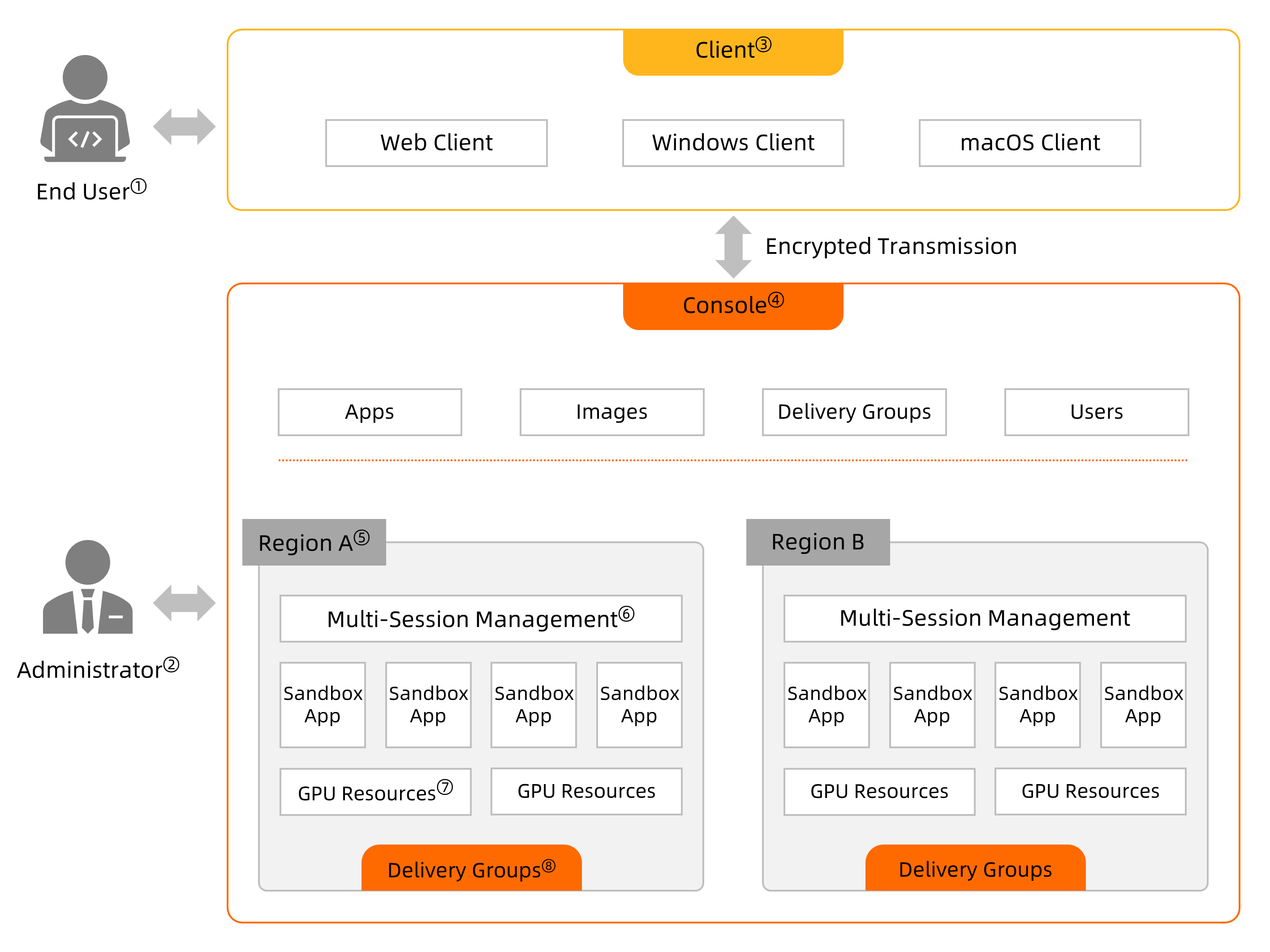This topic introduces the terms used in App Streaming to help you better understand and use the service.
The following figure shows the terms used in App Streaming and the interrelationships of the terms.

Table 1. Terms in App Streaming
No. | Term | Description | References |
① | end user | A user who uses cloud applications. Example: Jack, a designer who uses cloud applications to create 3D animation. | |
② | administrator | A worker who is responsible for managing and distributing cloud applications. Example: Kevin, an O&M engineer in the company for which the designer Jack works. | |
③ | terminal | The channel through which users access cloud applications. Terminals include web clients, Windows clients, and macOS clients. | |
④ | management console | A platform on which administrators can manage applications, images, delivery groups, and users. | |
⑤ | region | The physical location of a data center. Regions are completely independent. | |
⑥ | session management | The management module that is used to manage the concurrent sessions of end users. Administrators can configure this module to specify the maximum number of end users that can access cloud applications at the same time. | |
⑦ | resource | A cloud computing carrier that supports the running of cloud applications. Resources are sold based on specification plans. Each specification varies based on vCPUs, memory, and GPUs. | |
⑧ | delivery group | A logic group based on which cloud applications are delivered to end users. The group includes the images, resource management policies, and user groups on which the cloud applications rely. |
session
A session is a logic connection that is established when an end user connects to a computing resource in App Streaming from an Alibaba Cloud Workspace terminal, such as a web client, Windows client, or macOS client.

A session is established when an end user connects to the computing resource and is closed when the end user disconnects from the resource. After a session is established, if the end user proactively or reactively disconnects from the computing resource, the countdown to session expiration begins based on the retention period that you specify for disconnected sessions. If the end user does not reconnect to the computing resource before the countdown ends, the session expires and unsaved data is deleted. If the end user reconnects to the computing resource before the countdown ends, the end user returns to the session and can still access data.